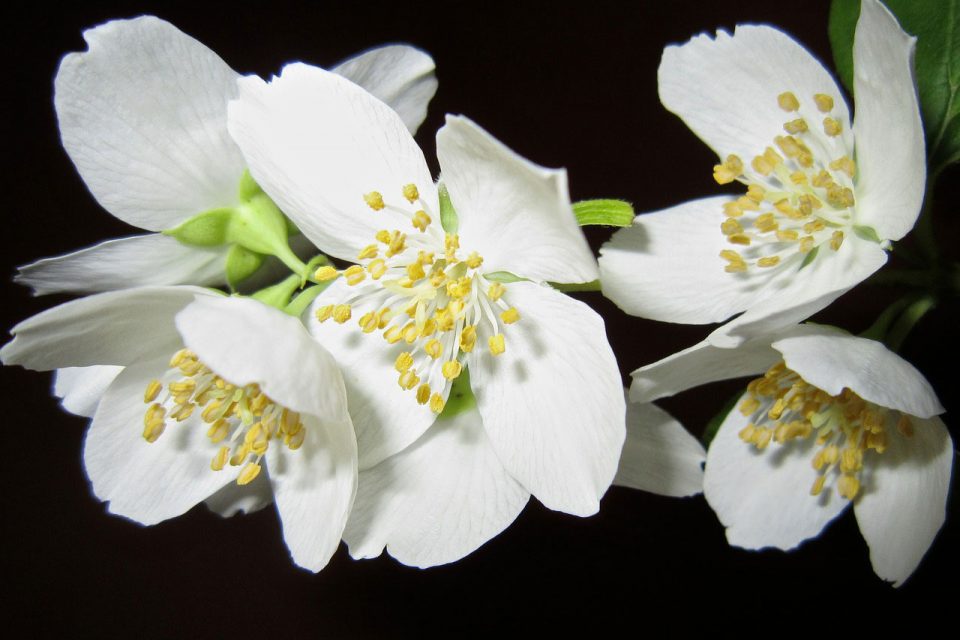
What's So Great About the Jasmine Flower?
Jasmine has been cultivated and prized by humans for millennia. The showy plant is famous for its beautiful white flowers and rich fragrance. Many people have heard of the flower, or maybe even have a friend named Jasmine. But, not many people know of the importance of this simple looking white bloom. We’ll go over some facts about jasmine and why this plant has so much significance in many different cultures.
Jasmine is a genus of plants we call Jasminum. There are actually well over 200 species of the plant, and they come in a variety of shapes, colors, and sizes. You can find them all over tropical and subtropical regions of Europe, Asia, and Oceania. But, the highest diversity of jasmine is in southern and southeast Asia.
Although there is only one species of jasmine native to Europe, many different species now grow naturally in Meditteranean countries. Likewise, horticulturists and home gardeners alike cultivate the flowers throughout the Americas. It seems like everyone wants to fill their gardens with the delicate, scented flowers. What makes this plant so great?
Fragrance
The main reason jasmine is so famous is its strong fragrance. People adore the flower for its strong, sweet smell. Countless cultures worldwide include it in aromatic products like candles, perfumes, soaps, and lotions. You can even infuse your own products at home with the lovely scent of the white bloom.
Some types of jasmines are grown commercially, strictly for use in cosmetics and aromatherapy. Because it’s such a highly sought after scent, jasmine essential oil is one of the most expensive commodities in fragrance-based industries!
One common gardening practice is to plant jasmine close to windows, to allow the scented air to drift into your home during the day. It’s basically like having a natural air freshener right outside your house.

Jasmine Tea
In many countries, jasmine tea is a popular drink. Tea makers start with a base of green or white tea. The flower buds of Arabian jasmine, Jasminum sambac, are steeped in the tea inside a special machine for up to six hours to flavor the beverage. Sometimes, brewers repeat this process multiple times to get the most flavor from the plant.
It’s important to note that the flowers and leaves of jasmine are not edible, so you shouldn’t simply brew the plant directly in water to make tea.
With that said, jasmine tea is a popular beverage in China, India, and many countries in the Middle East.
Culture
People in the Middle East and Asia hold jasmine to such high regard that they consistently feature the flowers in traditional ceremonies. Even the origin of the scientific name Jasminum has significance. The name comes from the Persian word “yasamin” which means “gift from God.” Only one of the most beautiful flowers could boast a name like that.
In many countries, jasmines evoke love and peace, so it often takes part in wedding ceremonies. It also symbolizes modesty; although jasmine flowers are small and simple, they produce a strong, delectable fragrance.
In 1993, Arabian jasmine was declared the national flower of Indonesia. Although this decision was made relatively recently, the plant had been sacred in Indonesian culture since ancient times. Indonesian wedding ceremonies have traditionally used the flower buds in garlands and headdresses.
Like in Indonesia, jasmines are used in wedding ceremonies in Pakistan. The bride and groom wear garlands made of white jasmines and red roses to symbolize love and harmony. In Thailand, jasmine is a common symbol of motherhood. The Syrian city of Damascus is also called the City of Jasmine and uses the flower as its symbol.
As you can see, people all over the world revere jasmine, and for very similar reasons.
Cultivation
Because of its international popularity, jasmines have been cultivated for generations. While most types of the plant can only survive in tropical climates, there are a few cultivated varieties more suited for temperate regions.
So, if you’re dying to have one of the sweetest smelling flowers in your garden at home, there’s bound to be a type of jasmine that’s right for you!













